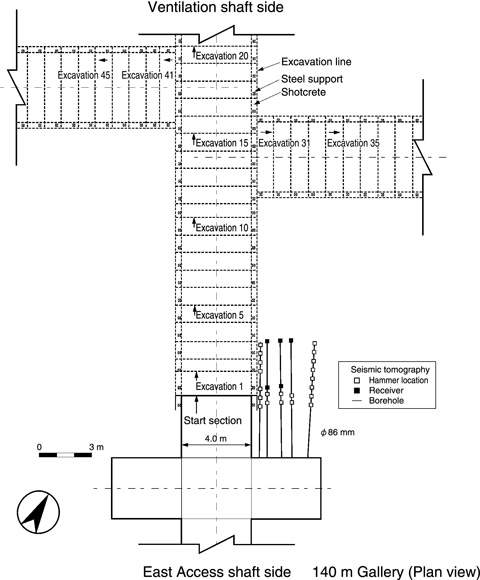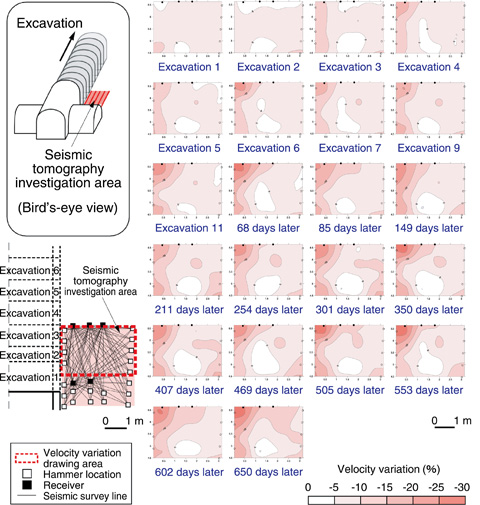
Fig.3-22 Layout of the EDZ experiment

Fig.3-23 Variation of seismic velocity
When a tunnel in an HLW repository is excavated, an excavation damaged zone (EDZ) is formed around the tunnel. Inside this zone, changes in the characteristics of a rock mass occur; for example, the degree of damage depends on the relationship between the strength of the rock and the effective in situ stresses. Such changes will affect the migration of radionuclides; therefore, estimation of the various characteristics of EDZs is essential for the geological disposal of HLW. The Horonobe Underground Research Laboratory (URL) Project, involving research and development for the geological disposal of HLW in diatomaceous mudstone, concerns modeling EDZ behavior based on the understanding of the mechanisms of development and evolution of EDZs.
Seismic tomography is a geophysical survey method that can image conditions inside a rock mass, similar to medical X-ray CT scans. Thus, it is an effective technique for investigation of EDZs. It is known that seismic velocity is slower in rocks with cracks than in those without cracks.
Seismic tomography was applied to examine the influence of excavation at the 140 m Gallery of the Horonobe URL. Fig.3-22 illustrates a plan view of the layout of an EDZ experiment. Fig.3-23 is an example of the results of the seismic tomography surveys. It is apparent that regions with velocity decrease appeared in the area surrounding the tunnel as excavation progressed. It is also noted that the seismic velocity decreases by 10% further from the tunnel but 25∼30% closer to the tunnel, and regions exhibiting velocity decreases extended to depths 0.5∼1.0 m from the tunnel wall; such regions expanded even after excavation ceased.
We intend to examine the influence of EDZs at different depths in order to understand the mechanisms underlying the development and evolution of EDZs and to model EDZ behavior.